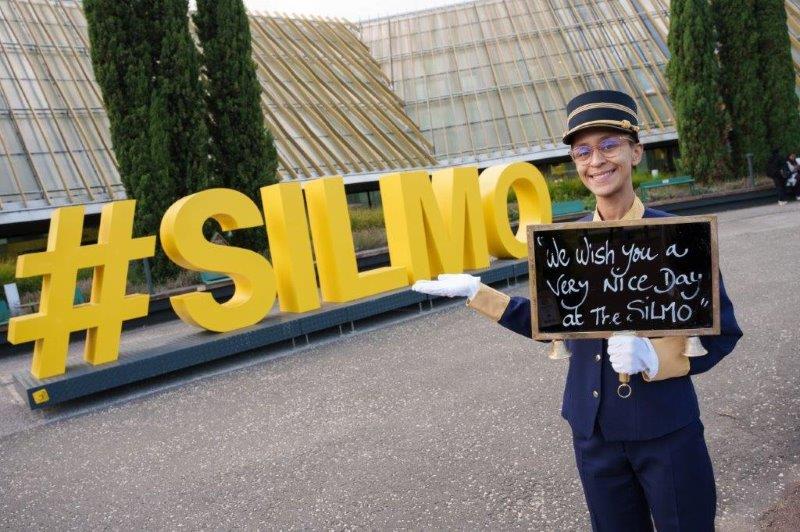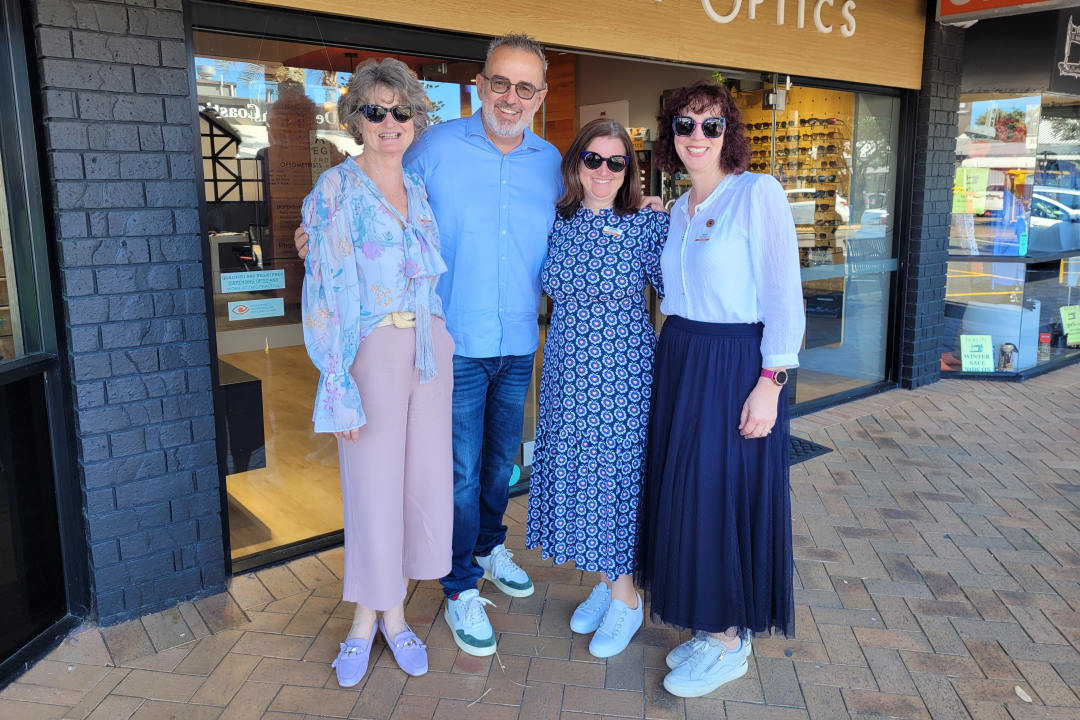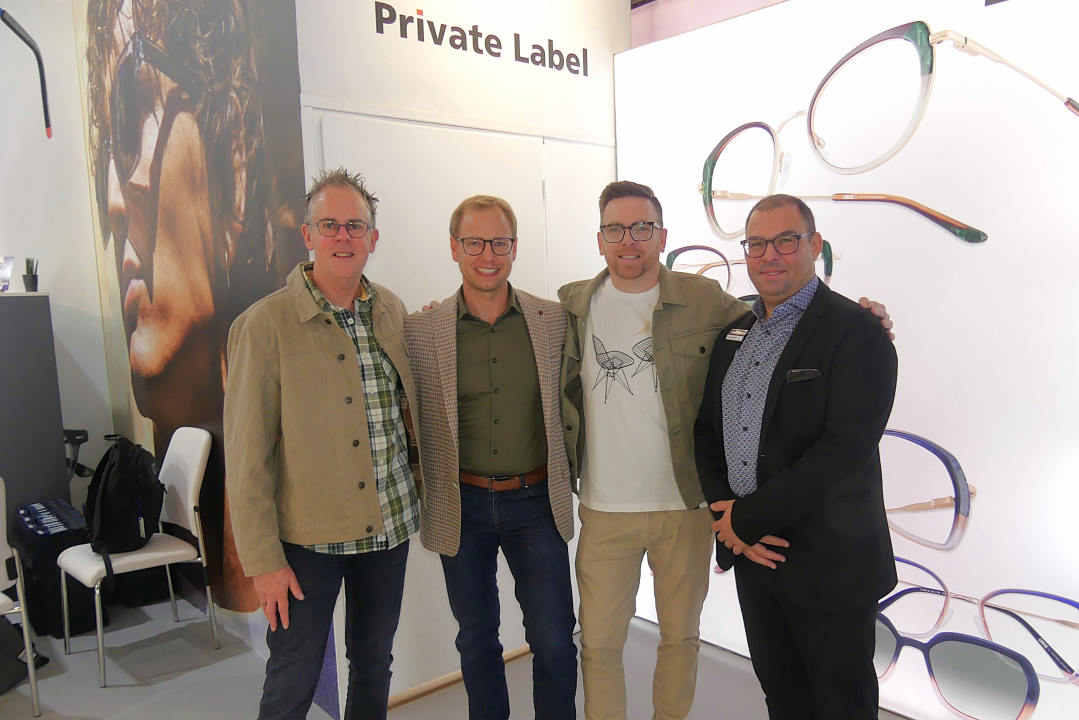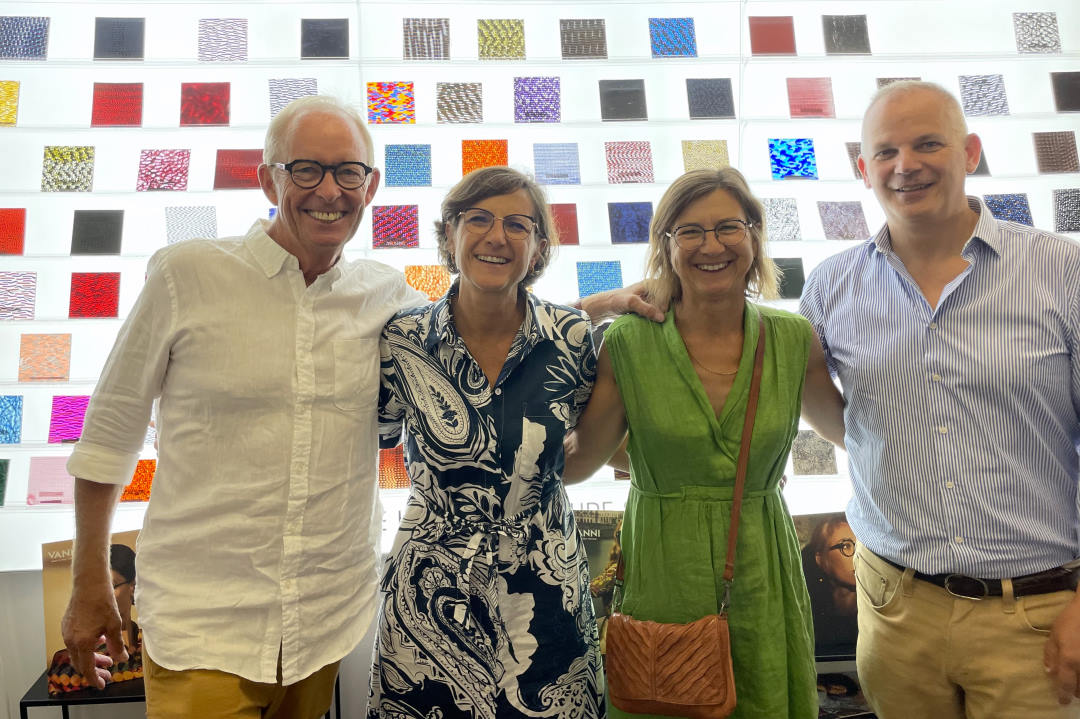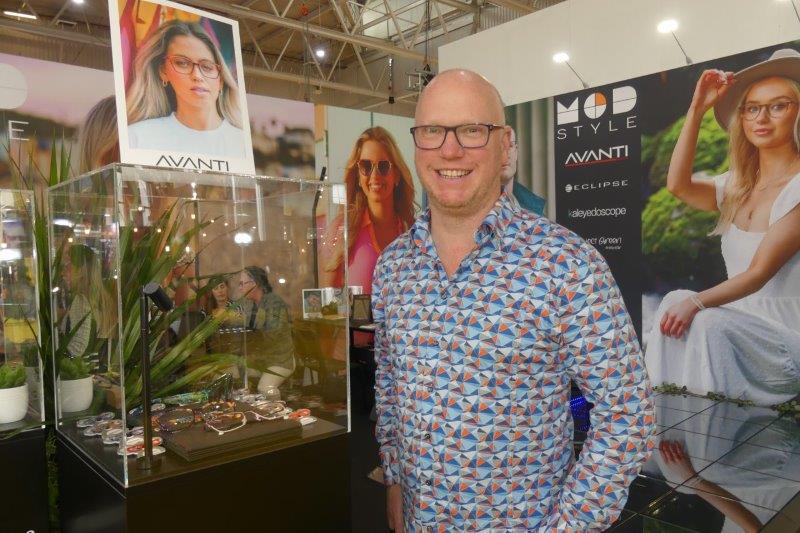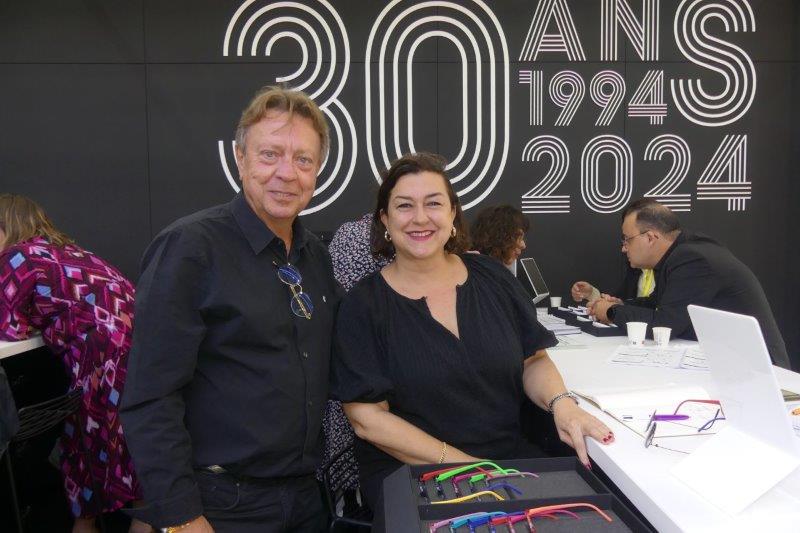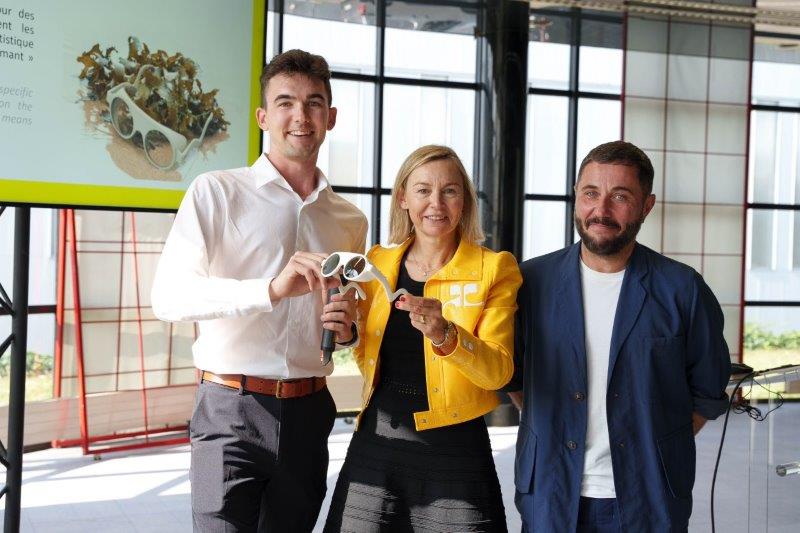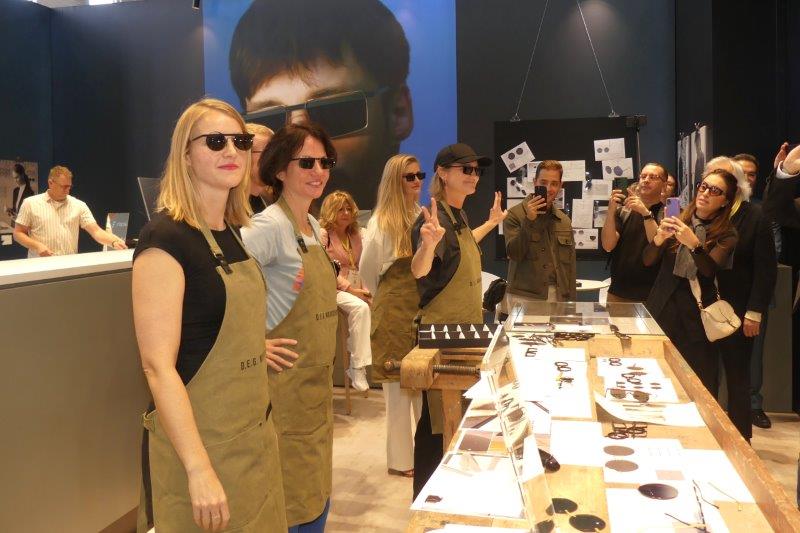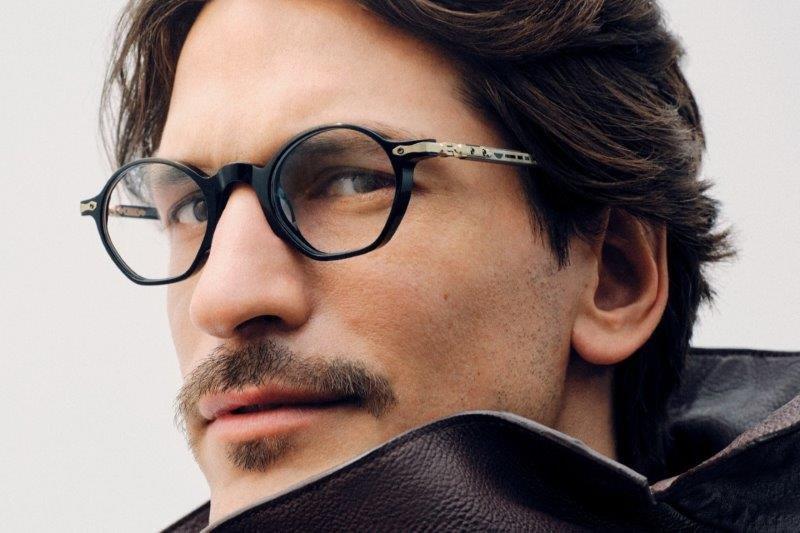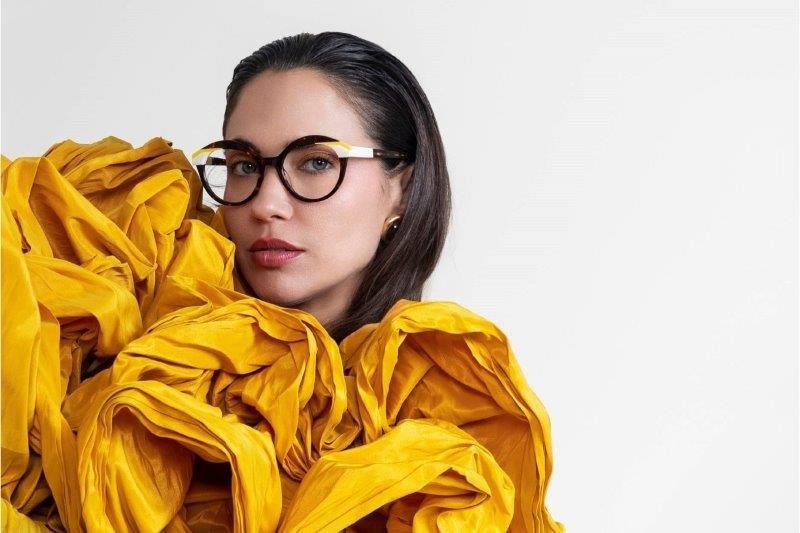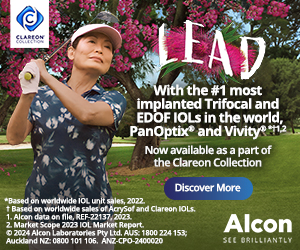Silmo 2024: a riot of colour and choice
During four intense days of networking, buying and inspiration, the internationally famous Paris-based optical fair Silmo welcomed 32,125 visitors (up 2.6% on 2023) who came to see 900 exhibitors showcasing more than 1,500 brands from 144 countries. Set over two massive exhibition halls, covering 75,000m², eyewear companies large and small, long-lived and new, battled to attract attention, promote their latest collections and secure orders for the coming year.
Colour, colour everywhere!
At first glance, there appeared to be few obvious trends, with an eclectic mix of shapes, materials and colours on offer. But colour abounded! Bright reds fought with strong blues, greens and even yellows; single, two- or three-toned patterns wove through chunky acetates, spread across intricately sculpted metals and flecked across thinner bio-acetate frames.
“There really is only one trend at the moment – colour,” acknowledged Marco Barp, co-founder of Tree Spectacles. “But what does it mean? For us it’s the right balance of colour, how you combine colour – you need a balance.”
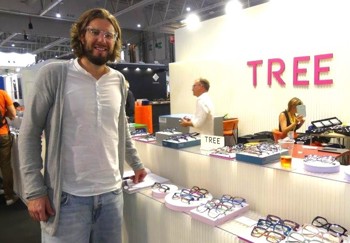
Marco Barp from Tree Spectacles
Proudly Italian, Tree Spectacles launched at Mido in 2012, the brainchild of Barp, his father and his uncle, who developed the Vogue eyewear brand (long since sold to Luxottica) and have years of experience designing and manufacturing eyewear. Originally focused on wood, combined with carbon fibre, the brand has now matured, said Barp, producing exclusive designs in titanium, bio- and cellulose acetate, all with colour at their heart.
Netherlands-based C-Zone, known for its metal frames, proudly displayed newly developed ranges in bio-acetate and full-acetate, alongside its colourful metal frames. Introduced just six months ago, C-Zone’s first acetate range wasn’t colourful enough, especially for the European market, admitted managing director Rob Maas. “So I went really bold and now they are selling really well.” In today’s market the bolder you go with colour, the better it appears to be, he said. “But it still has to be wearable and saleable, you can’t go wacky on the shapes.”
Slightly less obvious was another trend – the growth in choice in men’s frames, said Maas. “Everyone is looking for men’s styles now, especially frames with colour. You don’t have to be boring as a man anymore, which is good for C-Zone!”
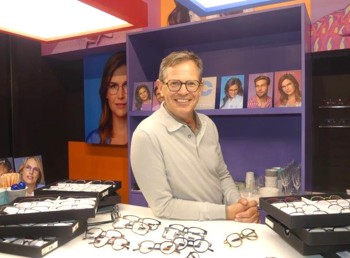
C-Zone's Rob Maas
Colour is part of Italian ethically responsible eyewear company Vanni’s DNA, which prides itself on its own custom-designed Vanni red. But today there are definitely more companies being braver with colour, even with red, said Vanni co-founder and designer Alessandra Girardi. “You can enhance your personality through colour.”
There are always seasonal colour changes, even within the brighter colours that abound today, said Vanni’s head of style, designer Irene Chinaglia, whereas shapes tend to trend for 10 years or more. Today it’s round and geometric designs; you simply can’t sell the small rectangular shapes and ovals from the past, which is a good thing, laughed Girardi.
Clip-on cool with Jaguar and Land Rover
Another recurring theme at this year’s Silmo was the number of eyewear firms which had or were introducing clip-ons to their ranges.
Clip-ons are definitely increasing in the market because of their convenience and affordability, said Charlotte Chambers, marketing executive of British-based company Eyespace. “A lot of people can’t afford and don’t want to get prescription sunglasses plus prescription glasses and keep changing them during the day, especially when they are driving. So we’re noticing a big demand from both opticians and their customers for clip-ons.”

Eyespace's Charlotte Chambers previewing the new Land Rover clip-ons
Eyespace’s Jensen range for men and its budget range Zips already come with clip-ons, but the company is now poised to launch clip-ons for its precision-engineered Land Rover eyewear range. Like their namesake, the Land Rover clip-ons are sleek and streamlined, said Chambers, with skull-fit, silicone-based temples and standard or mirrored tints. Reflecting Eyespace’s environmental stance, Land Rover’s new ‘eye fronts’ are also made of G850 Rnew, a natural castor-seed oil product farmed under the Pragati initiative, which ensures ethical and sustainable fair-trade agricultural standards.
Land Rover’s sister company Jaguar also used Silmo to unveil a range of clip-ons designed and manufactured by German-based Menrad as part of its new high-end, super-lightweight Performance collection. Design director Eberhard Müller-Menrad said recent advantages in technology had swung the decision as they allowed Menrad to offer a discreet, self-centring eye front that didn’t look like a clip-on. They use magnets, no clamping, and are superlight, reflecting Jaguar’s Performance eyewear segment, he said. “Personally, I’ve been following clip-ons for years. They are super handy, but we only decided to go for it when we saw this (clip-on) system. The most important thing if you wear a clip-on frame without the clip is it must look like a normal optical frame; there must be no compromise in terms of aesthetics or performance, which is the case here.”
The importance of affordability…
Affordability isn’t just driving a growing market for clip-ons, it’s driving other purchasing decisions, said Chambers, whose company Eyespace launched Arhlo last year to fill a gap in the market for affordable sustainable eyewear.
Etnia Barcelona’s new premium collection Pellicer, unveiled at Silmo and named after the company’s co-founder and designer, was designed to compete with frames that normally retail for thousands of dollars, said Etnia’s global director Marc Juncosa. But they have been priced at around €350 (NZ$613) to appeal to a market that wants luxury but not the haute-couture price tag, he said.
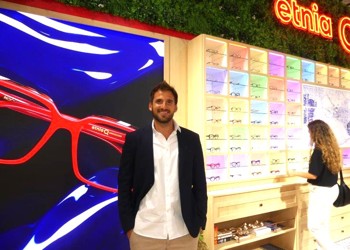
Marc Juncosa, global director of Etnia Eyewear
The price point where practices pitch their frames is extremely crucial, said C-Zone’s Maas. “If you mark it up too high, you won’t sell it. You have to give people reasons to buy designer frames and price is very important to that.”
…and understanding when less is more
Since Covid, practices have rationalised their suppliers, focusing on those who supported them through the tough times and who pride themselves on providing a reliable service, so won’t let them down, said Juncosa. “Service should be key. We try to help our opticians build their businesses properly, by being the best partner we can be. In Covid we gave them what they needed and said to just pay us when they can… it’s about loyalty and service.”
All the eyewear designers interviewed agreed optometry practices should focus on offering a broad range of frames from a few tried and trusted suppliers who provide a reliable service. This service ethos should also extend from optometry practice staff to their own customers, said Juncosa. “Customers are looking for a special experience in store, so focus on quality and service to avoid any problems and ensure they come back.”
A customer who enters an independent practice wants something special; they want to see a range of possibilities, not three or four pieces from 30 to 40 brands, said Nicola del Din, CEO of specialist titanium eyewear company Blackfin. “This is the biggest mistake (a practice owner) can make, as that can be a mess and customers don’t want to see a mess, they want well explained concepts. So it’s better to have eight to 10 brands but with a broad range of colours and shapes.”

Blackfin CEO Nicola del Din
Eyewear consumers who go to independent practices for their frames are looking for something different, something more than just a label, agreed Lars Flyvholm, CEO of the Design Eyewear Group (DEG), the European powerhouse behind Face à Face, Woow, William Morris, Inface, Nifties and Prodesign. “They are looking for more than just a product, which is why we as manufacturers and design companies have to take more responsibility to help opticians actually tell that story.”
A great example of providing something more than just a product is DEG’s latest release, Dance, for Prodesign and Face à Face, born from a unique collaboration between the company’s French and Danish designers, he said. “Literally every single frame we produce is designed by hand, made from sweat, and I think consumers are very interested to know that. So it’s our job to educate and help (practice owners) to be able to actually tell that story and give the consumer confidence so they can make a choice.”

Design Eyewear Group's Lars Flyvholm
Focusing on service and taking a broader range from fewer suppliers also reduces the amount of administration time a practice manager needs to spend on their frame ranges, said Flyvholm. “Find somebody you believe in and work with them for a while to really understand them. For example, there are not many companies which offer as diverse a portfolio as we do, that are still unique-design products.”
The current trend for bolder colours demonstrates how both eyewear companies and practice owners are becoming braver, pushing the boundaries to stand out a little more, he said. “They need to be braver to fight a polarised retail market, where price is the main driver for many people; they need to create something different.” Key to this is understanding your own market, your consumer, said Flyvholm, and then ensuring you have enough depth in your frame offerings to appeal to as broad a segment of your market as possible, both in terms of design and price. “It’s more accepted to be yourself today, so that’s what we as designers or companies have to match.”
The size and scale of Silmo 2024 bodes well for the independent eyewear market, said Australasian eyewear distributor Eyes Right Optical’s Mark Wymond, who was at the fair to meet with suppliers and introduce his Modstyle brand to the European market. “It's just massive. It shows a very robust industry still. Even with all the corporate buyouts, the independent sector is still alive and well and very strong in optics.” Every optometrist and dispensing optician should visit Silmo at least once in their careers to be inspired, he said. “It's quite phenomenal, the amount of suppliers and creativity that goes on in Europe.”
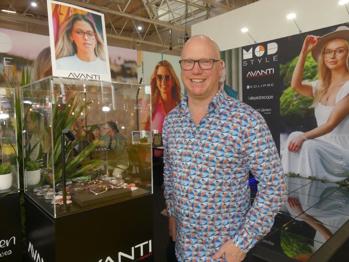
Mark Wymond, launching Modstyle at Silmo
Today’s eyewear consumer can wear anything they want, said Christian Seitz, CEO of German-based private label eyewear company Vistan Brillen. “Anything goes – choice is now very, very individual, very customised; the consumer is the trendsetter.”
To find New Zealand suppliers, see the ‘Frames’ or ‘Frame Index’ section at https://nzoptics.co.nz/searchable-oig







